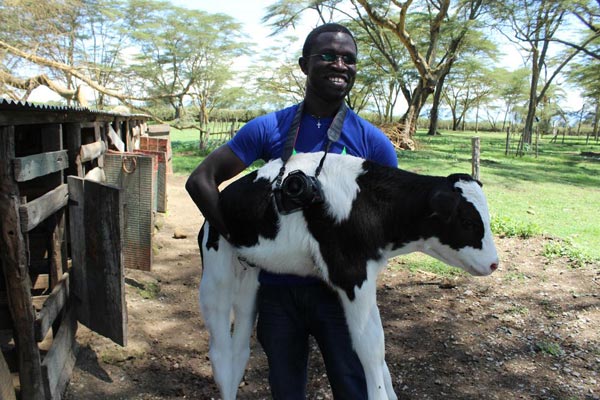Calves mainly rely on colostrum and milk from the dam for survival during their early weeks before being introduced to concentrates or even forage.
These two sources of feeds are clearly the most challenging part of the calf feeding programme, but offer the greatest potential for survival and foundation for good growth. It becomes tricky when the dam is not able to produce milk due to some reason or if she died while giving birth.
In such a scenario, the calf has to be raised by foster mothers or be fed on colostrum and milk substitutes in artificial colostrum and milk replacers.
FOSTER MOTHERS
On farms that are lucky to have several cows give birth at the same time, contemporary or foster mothers will be convenient for multiple suckling. Their colostrum can be used to feed other calves and excess stored for later use. After the colostrum feeding period is over, a cow can be assigned a number of calves depending on milk production.
The calves are made to suckle in turns ensuring that each calf only suckles the designated quarter. In cases where the calves get separated from the dam the same day they are born and are not allowed to suckle, then milk from another cow can be used to feed them. If there are no foster mothers, use of artificial colostrum is an option.
ARTIFICIAL COLOSTRUM
Artificial colostrum serves as a rich source of nutrients for the newborn calf as it has high amount of energy and protein.
To prepare artificial colostrum, the following ingredients are used: an egg, half litre of fresh warm water, half litre whole milk, one teaspoonful of castor oil and similar amount of cod liver oil.
Then mix thoroughly. The egg is a source of protein, castor oil and cod liver oil are sources of energy and whole milk acts as a source of lactose and milk protein. The diet of the newborn calf should contain these milk proteins since the enzymes that break down complex proteins do not develop in them until seven to 10 days after birth.
With these proportions for making artificial colostrum, you are able to feed for the needed four to five days of colostrum feeding at the recommended rate of 10 per cent of calf body weight.
MILK REPLACERS
These are commercially manufactured powdered products that must be reconstituted to resemble milk. They are also used when the demand and price of milk is high.
Since they are many in the market, a good milk replacer should contain at least 20 per cent crude protein from milk protein sources and minimum 20 per cent fat, also from animal source.
Health effects on the calf and economic efficiency are considered when choosing milk replacers. Poor quality milk replacers lead to digestive upsets, reduced calf performance or even deaths.
They should be reconstituted and fed according to the manufacturer’s directions. Over diluting or over-feeding will cause the calf to have loose dung or temporary non-infectious scours. Also avoid switching from one replacer to another.
To substitute milk replacer, feed the calf on excess colostrum from the foster mother. Ideally, at this age the calf should be drinking whole milk but since the excess colostrum has more solids, it will require diluting with water in the ratio of 1:1 and fed at body temperature.








